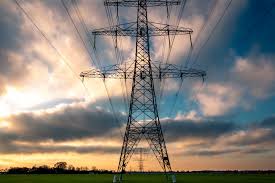China’s electricity system was already becoming stretched – even before unusually cold weather descended on most of the country in December and January.
In common with other fast-developing economies in Asia, China’s reliability problem stems more from rapid growth in electricity consumption than abnormal weather, with generation struggling to keep up.
Nationwide consumption rose by more than 9% in November compared with the same month a year earlier, one of the fastest year-on-year increases in the last decade, data from the China Electricity Council showed.
The increase in nationwide consumption was roughly the equivalent to adding the entire consumption of Texas, Arkansas, Oklahoma and Louisiana to China’s grid in the space of twelve months.
Electricity use rose across all sectors of the economy, including primary industries (+13%), manufacturing (+12%), services (+8%) and residential customers (+7%), despite milder than normal weather.
Business activity recovered rapidly from the slowdown in 2019 and early 2020 caused by the trade war with the United States and then COVID-19.
All four of the most energy-intensive industries saw big rises in consumption in November compared with a year earlier: building materials (+12%), chemicals (+11%), iron and steel (+9%) and non-ferrous metals (+11%).
And the average daily electricity consumption of manufacturing industry hit a record high in November, China Electricity Council’s monthly bulletin said.
High-technology and equipment manufacturers’ consumption rose 11% while consumer goods manufacturers’ use was up 5% from the same month a year earlier.
China’s accelerating electricity consumption is consistent with surveys that show manufacturers reporting some of the most widespread increases in business activity for a decade in November and December.
In both months, the official purchasing managers’ index was in the 91st to 94th percentile for all months since the start of 2011.
Once temperatures plunged in December, the grid began struggling to meet a soaring heating load as well.
WINTER CRUNCH
Each year, China’s electricity consumption peaks in summer, when air-conditioning demand is high, but pressure on the grid is eased by the availability of plentiful hydroelectric generation during the annual flood season.
By winter, hydro generation is lower, increasing the burden on thermal and nuclear generators as well as wind farms to make up the shortfall, which can stretch the availability of electricity.
November’s total consumption (646 Terawatt-hours) was well below the record reported in August (729 TWh), but with reduced hydroelectric support, the pressure on other generators was greater.
State Grid Corporation and provincial authorities began to warn about tight power availability in early December when colder than normal weather hit export and manufacturing-oriented eastern provinces.
Shortfalls were reported in the provinces of Hunan, Jiangxi and Zhejiang, which the central government blamed on faster than expected consumption growth.
The government and grid operator announced urgent measures to boost generation and transmission (“China says power supply ‘generally sufficient’ as cold snap boosts demand in south”, Reuters, Dec. 17).
The State Grid announced an eight-point plan, including a “no-touch” order to defer maintenance, while boosting weather monitoring and seeking more coal and gas (“China’s State Grid takes steps to alleviate power crunch”, Reuters, Dec. 18)
The need for emergency measures to stabilise the grid is a sign of a structural energy shortage. The country managed to scrape through this winter, but it will need far more generation to reduce reliability risks in future.

 Iran Energy News Oil, Gas, Petrochemical and Energy Field Specialized Channel
Iran Energy News Oil, Gas, Petrochemical and Energy Field Specialized Channel



